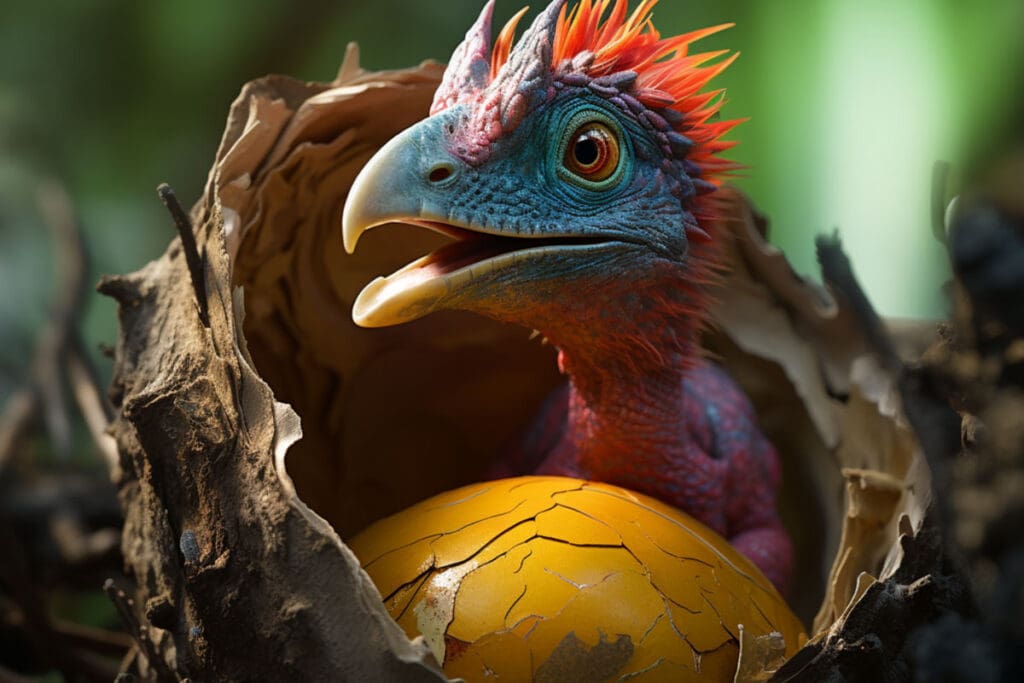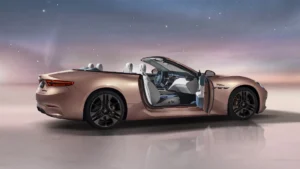
The contents of a 66 million to 72 million-year-old fossil of a perfectly preserved dinosaur embryo in an egg have been revealed to the public as part of the study published this week in the journal iScience.
Finding embryonic dinosaur fossils is extremely rare. Over the past 100 years, fossilized dinosaur eggs with intact embryos have only been found by paleontologists at about half a dozen sites. However, finding one as well preserved as this specimen is exceedingly rare.
The egg is part of a cash of fossils that were delivered to the Yingliang Stone Natural History Museum in the Chinese city of Nan’an in 2000, NBC News reported. But unfortunately, the fossils ended up in storage and were largely forgotten about.
It wasn’t until 2015 that the museum knew what it had. During the construction of the Yingliang Stone Natural History Museum, a staff member was sorting through the boxes and unearthed the fossils. The staff member examined a fossilized egg and noticed a fracture — and what appeared to be bones were visible.
“Museum staff identified them as dinosaur eggs and saw some bones on the broken cross-section of one of the eggs,” Lida Xing of China University of Geosciences, Beijing, said, SciTechDaily reported.
That discovery led to research by a team of international scientists. Fion Waisum Ma, a paleontologist at the University of Birmingham in the United Kingdom, lead the study. The research also included scientists from elsewhere in the UK, China, and Canada.
Read More: Scientists Confused by ‘Fairy Rings’ Found All Over the Globe
Baby Yingliang
Inside the 6-inch elongated eggshell, scientists discovered the fossilized bones of a dinosaur embryo. Scientists have named the embryo “Baby Yingliang” after the museum in southern China where it was discovered.
The complete baby dinosaur appears to be only days away from hatching. When hatched, it would have been roughly 10 inches from beak to tail. As an adult, it may have grown to more than six feet in length.
Scientists say the embryo is an Oviraptorosaurs, a type of theropod dinosaur with hollow bones and three-toed limbs. One unique feature of this dinosaur was its short, beaked, parrot-like skull. Their nickname is “egg thief lizards.” Oviraptorosaurs belong to a type of feathered maniraptoran dinosaurs from the Cretaceous Period of what is now Asia and North America. All maniraptoran dinosaurs are close in ancestry to birds.
“Tucking” Posture Shows Resemblance to Modern Birds
What makes this oviraptorosaur dinosaur embryo discovery even rarer is its posture. This is the first known instance that a dinosaur embryo has shown signs of a distinctive posture known as “tucking.”
“Tucking” refers to a positioning wherein the head is under the right arm. Scientists say that, until now, the tucking posture had only been seen in birds.
Xing and colleagues reported that the head of the fossilized dinosaur embryo lies ventral to the body, with the feet on either side. The back is curled along the blunt pole of the egg. This posture is previously unrecognized in a non-avian dinosaur. What makes this posture especially notable is that it’s reminiscent of a late-stage modern bird embryo.
“Most known non-avian dinosaur embryos are incomplete with skeletons disarticulated,” said Ma. “We were surprised to see this embryo beautifully preserved inside a dinosaur egg, lying in a bird-like posture. This posture had not been recognized in non-avian dinosaurs before.”
While still in the egg just a few days before hatching, baby birds will tuck their heads under their right wings. Embryos that fail to get this posture right seldom hatch properly, according to scientists.
Tucking seems to help baby birds make their first cracks in the egg shells by restricting the movement of their heads, according to Ma.
“It’s easier to stabilize the beak and to direct it to the same place when they try to break the eggshell,” Ma said.
Definitive Link, or No?
Some scientists speculate that the “tucking” posture could establish a definitive link between dinosaurs and birds. In other words, “Baby Yingliang” could be fossilized proof of an evolutionary path from dinosaurs that led to birds. It could be evidence that brings science one step closer to understanding how today’s species got where they are.
However, other scientists remain skeptical. Some scientists aren’t certain that what the researchers have interpreted as a tucking posture in the embryo is in fact that.
“This is an interesting discovery, but I am skeptical about the ‘tucking’ behavior as it is primarily based on a single specimen,” said Shundong Bi of the Indiana University of Pennsylvania, who is not involved in the study. “I think more evidence is needed.”









